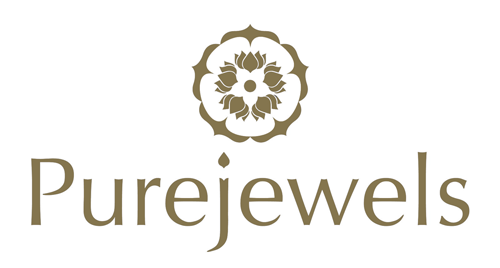We are delighted to present our comprehensive guide — Treasures from an Indian Jewel Box, that explores the rich and diverse world of Indian jewellery adornments, highlighting the different types for various parts of the body. The guide has been divided by body parts, to help you understand components that make up an Indian Jewellery Box.
India is part of the Desi subcontinent with a diverse culture. While each culture has their own style, they also have significance towards their jewellery items. Sometimes, these adornments overlap. From the ornate necklaces and chokers that beautifully frame the neck, to the intricate bangles and bracelets that adorn the wrists, our guide offers a glimpse into the captivating array of Indian jewellery. Our guide serves as an invaluable resource for both enthusiasts and those seeking to appreciate the artistry and craftsmanship of Indian jewellery.
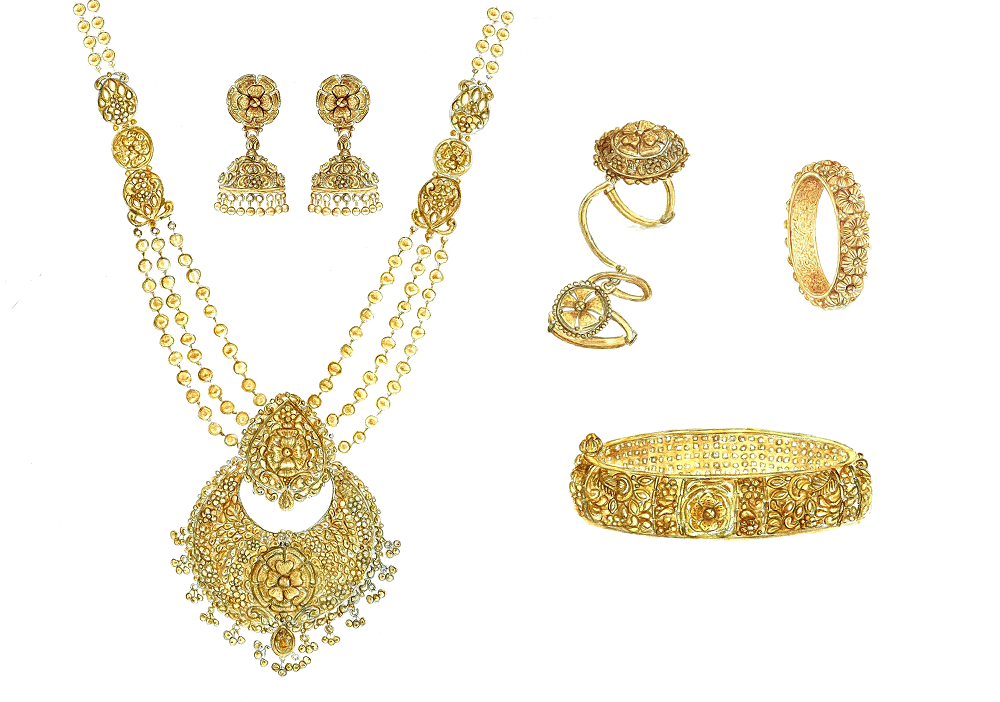
Some Of The Different Types Of Indian Jewellery Are:
Ornaments for the Hair
Maang Tikka, Sheeshphul, Matthapatti
The word Maang is an Indian word that refers to the partition of hair. A Maang Tikka is a long and slender piece of jewellery worn in the parting of the hair and onto the forehead. The piece usually consists of a beautiful motif that rests on the forehead, with an elongated chain for the support that is fixed in the partition of the hair. Depending on the style of main motif of tikka, it may be called by other names. E.g. a bell shaped maang tikka in Rajasthan is called as Bor, Borla or Rakhdi.
A sheeshphul or sisphul or sheeshpatti, is an ornament wore across the head like a band. The designs usually consist of a repeating motif forming a band. They can be worn on their own, or a with a maang tikka.
The word “mattha” refers to head. Mathapatti is similiar to a sheeshpatti where a jewellery band is worn on the head, however, while sheeshpatti is worn at the middle portion of the head, mathapatti is worn at the hairline.
Maang tikkas are usually worn by brides or married woman. However, unmarried girls and women may also wear it as a form of accessory.
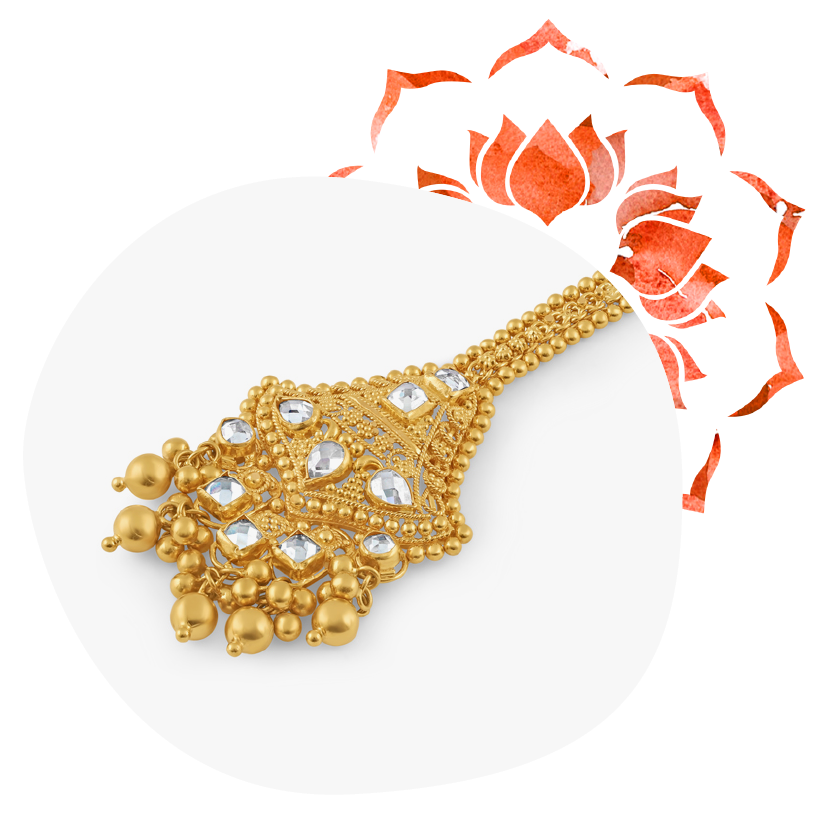
Sarpesh (Sarpech)
A Sarpesh or Sarpech is a brooch like ornament that is worn on the turban. This is usually worn by Sikhs and Muslims. A sarpesh’s design is usually inspired by floral motifs. They are often made with gemstones with an upward rising pattern. Usually they use the technique of meenakari (enamelling) and Jadau to create the ornament. Most of the time.
Chudamani
A chudamani is a large hair pin, worn with the support by pining it in the knot of the bun. The headress is Lotus shaped. It is often worn by brides from Himanchal Pradesh.
However, this is not to be confused with ivory bangles worn in state of Gujarat, also called as a Chudamani.
Passa (Jhoomar)
Think of the Passa or the Jhoomar as an large hair pin worn on the left side of the hair. This is worn by woman and it can be traced back to Mughals. The Mughal influence inspired this style among north Indians. The Passa is part of the traditional bridal outfit for a lot of Northern India communities.
Jadanagam
A Jadanagam is a hair ornament that is pleated into the hair. The name refers to hair and shape of a serpent, indicating its smooth elongated structure. The motifs are usually repeated in diminishing sizes till the end of a pleated hair. Hair in south India is often braided using three parts of hair, symbolising the meeting of the Ganga, the Yamuna and the Saraswati. Often this is made using Kundan and Jadau, and is worn by south Indians.
Ornaments for the Face and Neck
Earrings
The varieties of earrings in the Desi culture are vast. Often earrings are named after the shape they represent. Some types of earrings present in the Desi culture are:
Karan Phool
Karan Phool translates to “Flower of the Ear”. Sometimes they are worn in the earlobes, sometimes they are attached to the hair to relieve the weight on the earlobes.
Jhoomka
Jhoomka earrings are dome shaped earrings, often with little beads lining toward the end. In some cultures they are also known as jimkey. There will often be a primary motif right on the ear where the piercing goes in, which then leads to a dome like structure held together by jump rings. These come in various sizes.
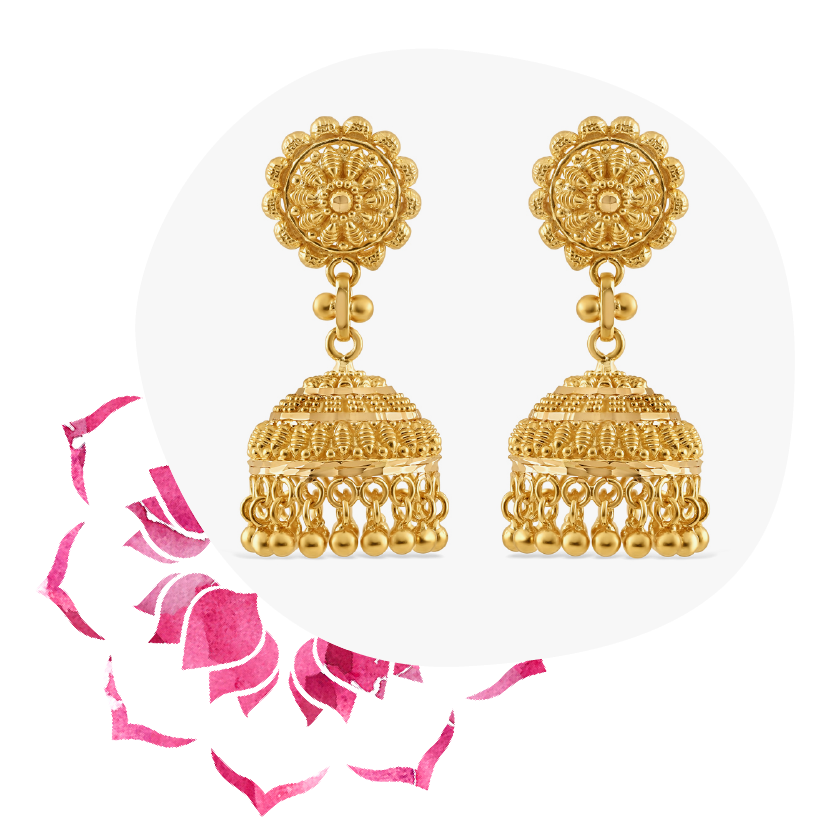
Chaandbali
A Chaandbali takes its inspiration from its namesake – the moon. The earring is crescent shaped, and often embedded with gemstones. These earrings are long with repeating patterns of the crescent shape of different sizes followed by one another.
Kaanbala
Kaanbala is a type of earring worn by Bengali brides that covers their earlobes.
Nosepins
Nosepins in India are known by many different names, depending on the region and community. It is known as Nath in Maharashtra or Nathani in North India. Sometimes the nose pin is worn as a stud, or as a large hoop attached with a chain. Sometimes these nose pins might have a small pendant in them known as Latkan (dangling).
It is said that piercing of the nose helped in reducing menstrual pain as well as labour pain. Depending on the religion or community, nose pins are worn in the left or the right nostril.
Mangalsutra
Every culture has its own way to signify the tying of a knot that involves a form of jewellery. Like wedding bands in the West, in India, the item used is called a Mangalsutra. It is a pendant accompanied with a long chain of gold or black beads woven into it. After the ritual of Saat Phera (or taking the vows by the fire), the groom ties the chain on the bride’s neck. It is a symbol of a married woman. The wife wears this until the death of her husband. During the olden days, this chain would be made out of threads dyed a yellow colour. In today’s age, people wear mangalsutras jewellery made out of gold.
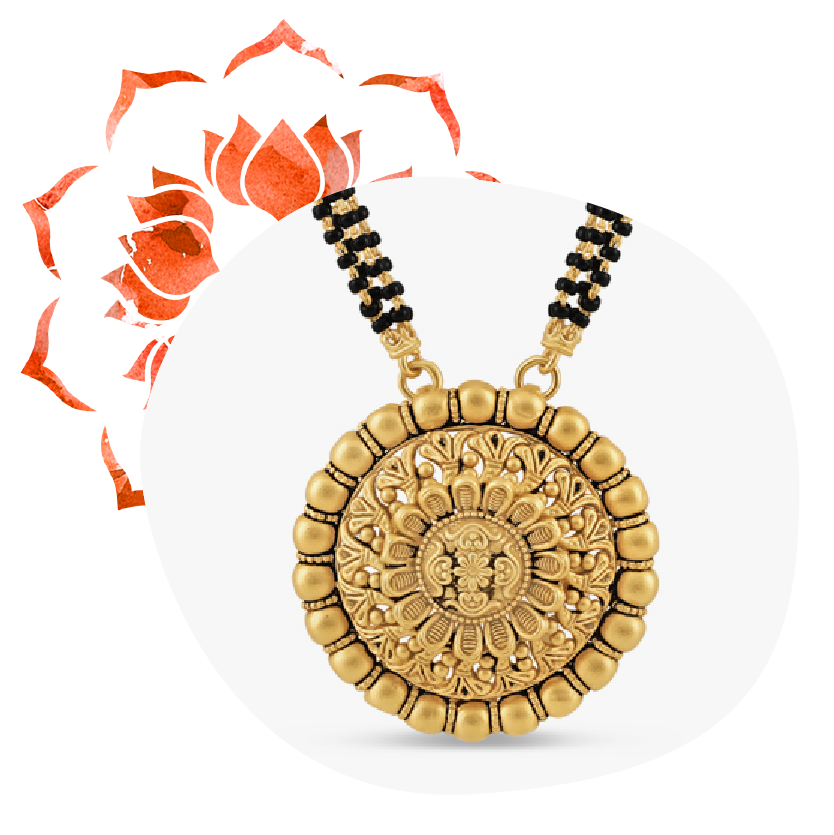
Depending on the community, the design and name of Mangaulstra can vary (while serving the same purpose). In the North, these are usually made with diamonds and called Tanmaniya. In Kerala they are known as Kumbla Thali and in Andra Pradesh as Sutralu Golusu.
Maala
Maala usually refers to necklaces which are long and often woven with gold beads or gemstones. These can also refer to long gold chains. Maala is worn by both men and women. They are inspired by the shape of a garland.
Haar
A Haar means necklaces. Necklaces in India are known by many names depending on their design. Tight and short necklaces which often have gold beads are called are Laccha or Galaband. These are often chokers. A Nimboli is the same but longer. A Raani Haar is a heavy queen’s necklace with intricate work and gemstones. Often necklaces of varying lengths are worn together in India, creating a layered look.
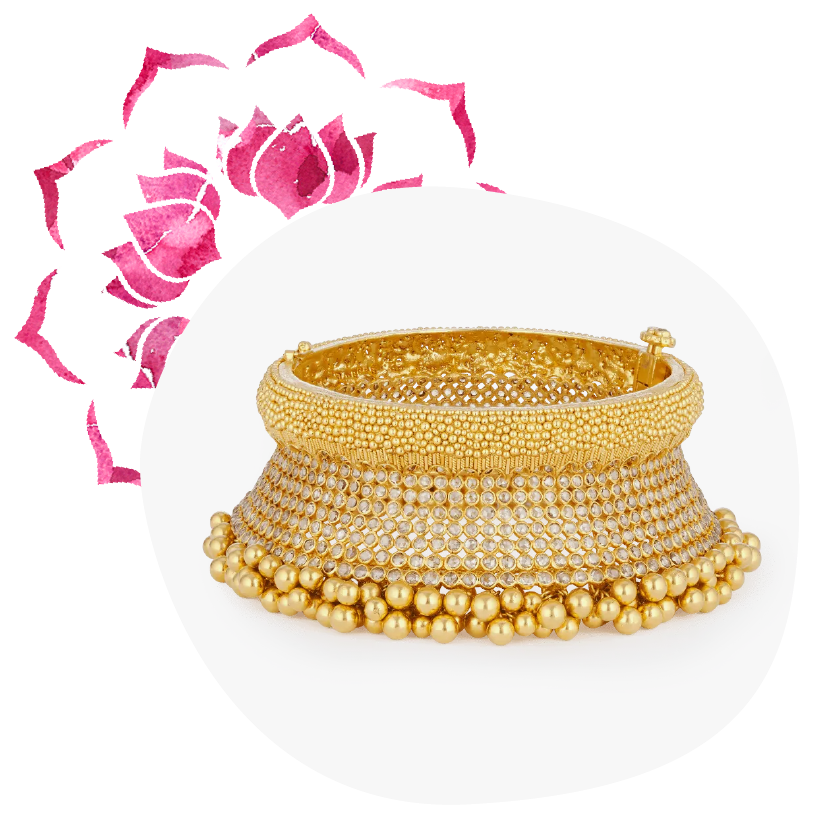
Ornaments for the Body
Kamar Pattha
A Kamar Pattha is a body belt often worn by brides on their weddings. It is made using floral and other nature inspired motifs. It is also called as For Kammar.
Ornaments for the Arms
Bangles
Depending on the size and shape of the bangle, it is known by many names across different regions in India. A Kada is usually a bigger bangle that can be worn either in one hand or both the hands. These are also worn my Sikh men and usually made out of silver.
A chudi is a traditional gold bangle that is smaller in size. The Shaka Pola is a set of white and red bangles worn by Bengali brides. In Odisha, Shaka Pola is known as Shanka Pala. Bengali brides also wear Loha, which is a bangle made using iron. Lac bangles are made using the natural resin – Lac. These panels are also called as Lathi and worn in Bihar as well as Andra Pradesh.
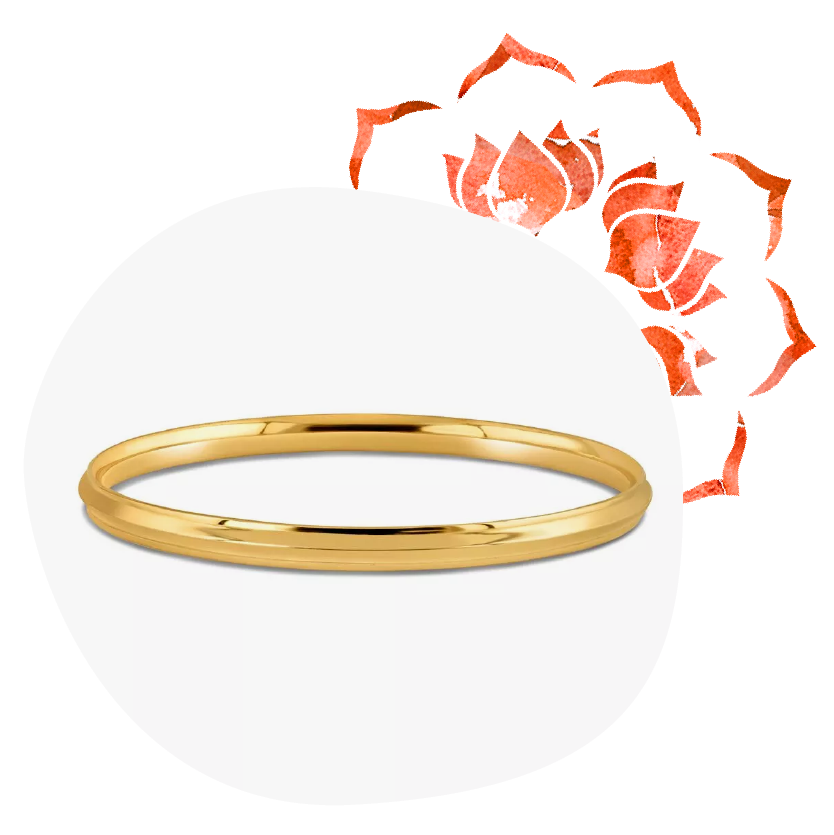
Rings
The exchanging of rings in India is a relatively newer concept. However, people wear rings made out of gold and silver for prosperity. It is also believed that rings with motifs such as a tortoise brings good luck.
Bajubaand
A bajubaand is an armlet. It is believed that it protects the wearer from evil eye, as well as brings prosperity.
Poncha
The Poncha is an Indian bracelet dating back hundreds of years. The bracelet extends into chains and connects it to rings.
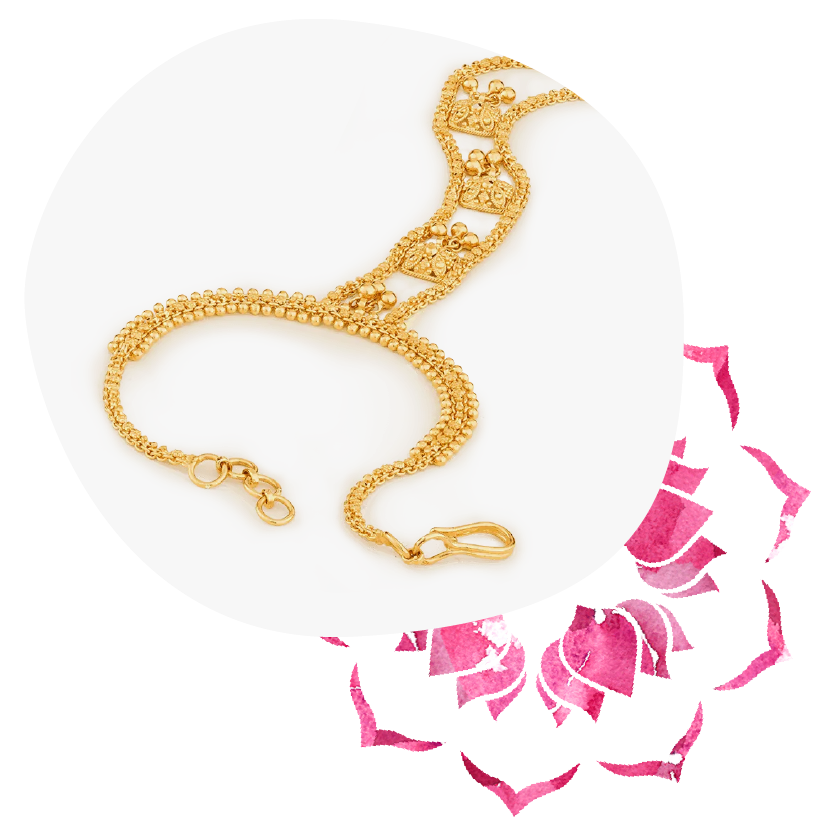
India is a melting point of cultures, regions and communities. Its diversity can be seen in everyday fashion, way of living, festivals, et cetera. Among the many avenues that showcase this remarkable diversity and intricate craftsmanship, jewellery holds a prominent place. The various styles and types of jewellery found in India serve as a captivating reflection of its historical, trade, and cultural influences.
